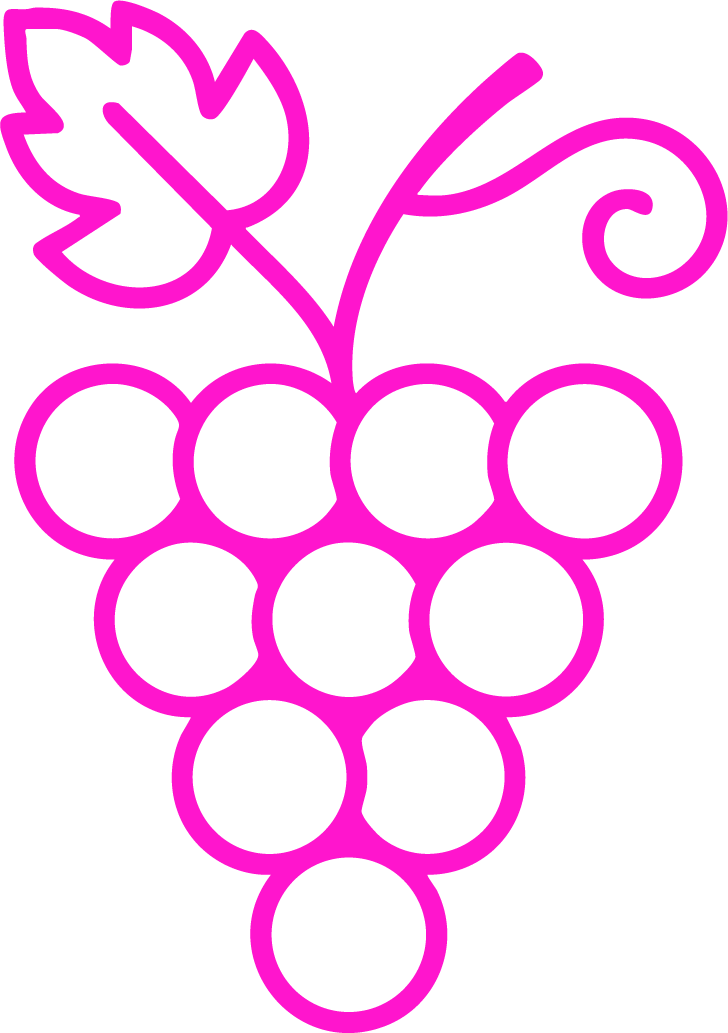Petit Verdot
🔊 Pronunciation: puh-tee vehr-doh
🔍 Quick Summary
Petit Verdot is a bold, deeply colored red grape from Bordeaux known for adding structure, spice, and color to blends—and now making spicy, floral solo wines around the world.
📜 History
Origin: Born in the 18th century in Bordeaux, France — believed to descend from ancient Biturica vines brought by Romans.
Ancient roots with mystery: The exact parentage remains uncertain, but it’s one of Bordeaux’s oldest known varieties.
Early favorite, later outcast: Once a staple in Left Bank blends, it fell from favor due to its late ripening and unpredictability in Bordeaux’s cool climate.
Global rebirth in warm regions: Thrived in Australia, California, and South America where it ripens reliably.
Revived as a bold solo act: Modern winemakers now bottle Petit Verdot as a varietal, showcasing its inky power and floral elegance.
🧠 What to Know
Petit Verdot is a small-berried, thick-skinned grape with intensity to spare.
Structure Enhancer: Adds tannin, color, and aging potential to blends—think of it as Bordeaux’s finishing salt.
Florals & Spice: Signature violet aromas and peppery spice elevate both blends and varietals.
Late to Ripen: Needs warm, consistent heat to fully mature—limiting its success in cooler regions.
Varietal Rarity: Increasingly bottled solo in New World regions, offering bold, full-bodied wines with flair.
Tannic but Balanced: Demands careful vinification to avoid harshness—oak and aging help tame it.
📍 Where It’s Found
Petit Verdot needs heat and patience—thriving where seasons are long and sun is strong.
🇫🇷 Bordeaux (France) – Gravel + Maritime = Blending spice
Moderate | 70–80°F (21–27°C)
Used sparingly in Left Bank blends, mainly in Médoc and Graves.
🇦🇷 Mendoza (Argentina) – Alluvial soils + High-altitude sun = Bold varietals
Warm | 75–86°F (24–30°C)
Full-bodied, floral, and age-worthy as a solo performer.
🇺🇸 Paso Robles (California, USA) – Limestone + Dry heat = Big, spicy reds
Hot | 85–95°F (29–35°C)
Ripe, plush expressions often bottled as a varietal.
🇦🇺 Barossa Valley (Australia) – Clay + Sun-drenched = Ripe tannins and color
Hot | 85–95°F (29–35°C)
Lush and fruit-forward with a savory backbone.
🇪🇸 Yecla (Spain) – Sandy soils + Dry inland heat = Compact, structured wines
Hot | 85–95°F (29–35°C)
👅 Flavor & Style
Petit Verdot delivers inky color, chewy tannins, and intense violet-and-spice aromatics.
Color: Deep purple to almost black
Aromas & Flavors:
Primary: Violet, black cherry, plum, blueberry
Secondary: Black pepper, clove, cedar, vanilla (from oak)
Tertiary: Leather, tobacco, earthy minerality (with age)
Structure:
Body: Full
Tannin: High
Acidity: Medium to high
Alcohol: Medium-high to high (13.5–15.5%)
🛠 Winemaking Notes
Petit Verdot is power in a grape—winemakers use technique to shape its strength.
Short Maceration for Blends: Extracts color and tannin without overdoing bitterness.
Oak Aging Essential: Tames tannins and adds spice and structure (often aged 12–18 months).
Blending Tool: Used at 1–10% in Bordeaux to lift Cabernet Sauvignon and Merlot.
Varietal Expression Growing: Especially in warm New World climates where ripeness is assured.
🍽 Food Pairing Ideas
Pairs well with rich dishes that match its tannin and aromatic weight.e.
Savory: Grilled lamb, venison stew, pepper-crusted steak
Cheese: Manchego, aged gouda, blue cheese
Unexpected: Char siu pork, mole negro, roasted beet and balsamic tart
🔗 Related Topics to Explore
🍇 Cabernet Sauvignon – Bold partner in Bordeaux blends
🌍 Oak Aging – Adds vanilla, spice, and structure
🌱 Late-Ripening Grapes – Heat-loving varieties with deep flavor
⚗️ Grape Genetics – Uncovering parentage of ancient varieties



